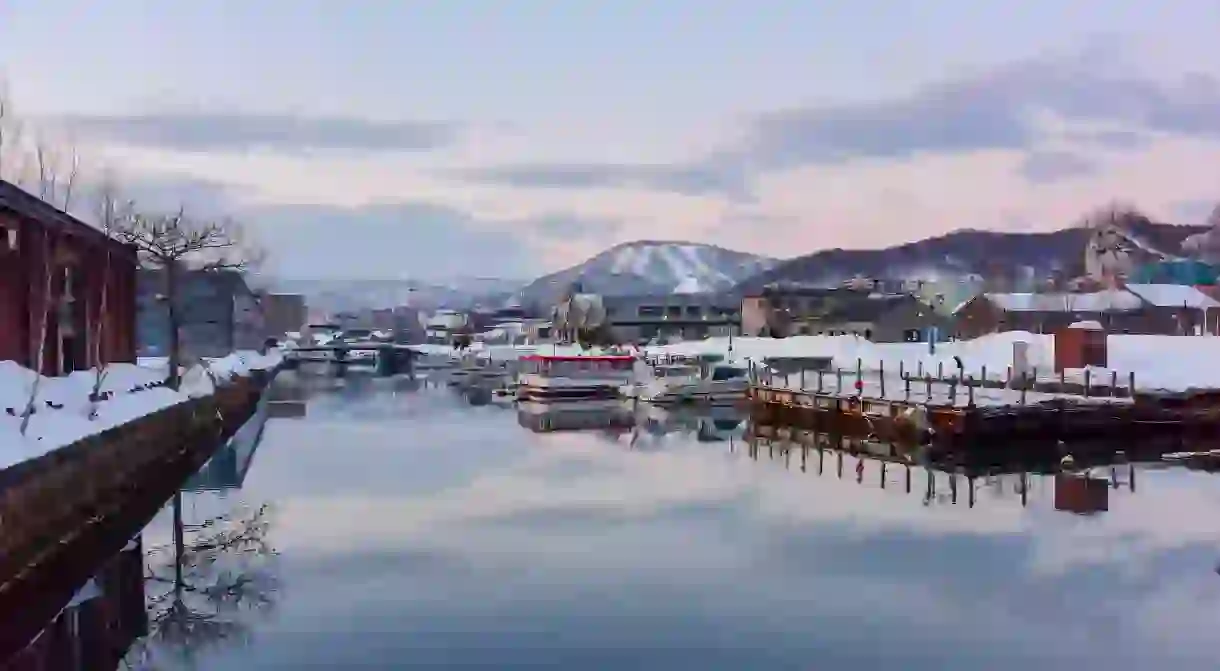Introducing Otaru: Northern Japan's Fairytale City

Otaru is a compact harbour city in the west of Hokkaido, the second-biggest island in Japan. This glittering portside escape, with a strong European influence, a hangout for the nation’s northern elites and now a must-visit addition to your Japan itinerary.
During the early 20th century, Otaru was Hokkaido’s most bustling city. Populated by grand warehouse buildings of stone and with its backdrop of snow-capped mountains, its reputation for unparallelled scenic beauty has made it a popular destination for domestic travellers.
Though it’s still unexplored territory for international guests, you’d be amiss to overlook it. Just half an hour from Sapporo by train, Otaru makes an excellent spot for a day trip or a weekend-long escape.


A brief history of Otaru
The name ‘Otaru’ means ‘river running through the sandy beach.’ The town’s name was the title given to the area by Japan’s Ainu people, a group of indigenous people of Japan who occupied the northern corners of Hokkaido and southern islands of Russia.
Today, official records state that the Ainu population sits at 25,000. But given the group’s assimilation into Japanese society, a more accurate estimate would be around 200,000. During the Edo period (1601–1868), this group controlled Hokkaido, negotiating trades, opening up channels with wider Japan and laying the foundations for the city.
The Meiji Restoration (1868) spelt the beginning of the end for Ainu culture. During this time, the Japanese government began introducing a series of reforms in the hopes of modernising the country by adopting Western styles and customs.
In 1880 Hokkaido’s first railway line was opened connecting Otaru and Sapporo, and within the following decade, the city was an established trading port open to the US, the UK and Russia.
Up until the mid-20th century, the city’s economy boomed as merchants opened up warehouses along the canal, getting rich off of the fishing industry, international trade and glassware. But it was always overshadowed by the ever-expanding city of Sapporo.
Eventually, Otaru’s reign came to an end and by the 1950s it was unofficially designated a living museum of Japan’s past reserved for tourists, wealthy Hokkaido folk looking for a city escape and those passionate about the art of glass blowing.

What to see
Given the size of Otaru – around 120,000 people, small by Japanese standards – getting to know the area well in a short period is very doable, which is what makes it so appealing.
The picturesque canal, still lined by the beautifully ageing wooden warehouses is Otaru’s main artery. It’s a lovely place to relax and watch the boats drift up and down in summer. But it’s in winter, with its clear, crisp sunny days, blue skies and snow-dusted scenery that it’s at its most magnificent; especially during The Yuki Akari no Michi Festival (Snow Light Path Festival) which sees the water-pathway illuminated by endless rows of snow-crafted lanterns.
Otaru is famous for its glass, which you’ll find on sale in countless stores throughout the area; the best, and oldest, of all the stores, though, is Kitaichi Glass, a multi-levelled shop that sells everything from small, shiny glass key chains to high-end pieces.
Even if you’re not interested in shopping, this former warehouse is worth visiting for its coffee shop. With its cathedral-like A-frame roof, exposed rustic wooden beams and lantern-lit ambience, it’s the perfect place to unwind as you listen to one of the town’s most talented pianist hold court, usually performing laid-back jazz classics on the grand piano tucked alongside the far wall.

The arts scene
The name Otaru is synonymous with a various selection of Japanese arts and crafts, but is most well known for its world-class glassware. Compared to the rest of Japan, it took a while before electricity was accessible in Hokkaido. Oil lamps were used right into the 19th century, and as a result, the city became masters of oil-lamp crafting.
Given that it’s a port town, the city’s artisans also produced a lot of glass buoys which were used by the area’s many herring fishermen. If you want to learn more about glass blowing, or are interested in collecting classic art pieces, there’s no better place than Sakaimachi Street, Otaru’s commercial centre. This major thoroughfare is lined by arts, crafts and specialist sake stores.
It’s worth noting that if you do plan to spend big (or at least over 5,000 yen, about $45USD) visitors to Japan qualify for Japan’s Tax Exemption – which is available across the country – just show your passport at the checkout to avoid the 8% consumption tax.

What to eat
Being a port city, it goes without saying that you can’t ignore the seafood. If you had to ascribe one signature dish to the city, it’d be kaisen donburi. A simple but satisfying meal, kaisen donburi is a bowl of white rice covered in a selection of freshly caught seafood.
One of the best places to try donburi is Kaisen-ya Yoshi-don, a restaurant known for its colourful displays and more than generous bowl sizes. Run by a famous Kaisen-ya sushi shop chain, it’s accessible for foreign guests both figuratively and literally. The shop is just a short walk from the canal and the entire menu features large images, so you know precisely what you’re going to get. Don’t know what to order? Try the menu’s feature star, the Hokkai-don which is filled to capacity with succulent local crab, salmon roe, and melt-in-your-mouth uni (sea urchin).

How to get there
There are regular daily trains that run between Sapporo and Otaru on the JR Hakodate Main Line. You can get between stations in 45 minutes by local train or 30 minutes by rapid train. If you’re flying directly into Hokkaido, there are connecting trains from New Chitose Airport which run twice an hour.
Given its accessibility, laid back vibe, incredible scenery and vibrant food culture, it’s inevitable that Otaru won’t be kept secret. Make sure you try to get there before everyone else does!














